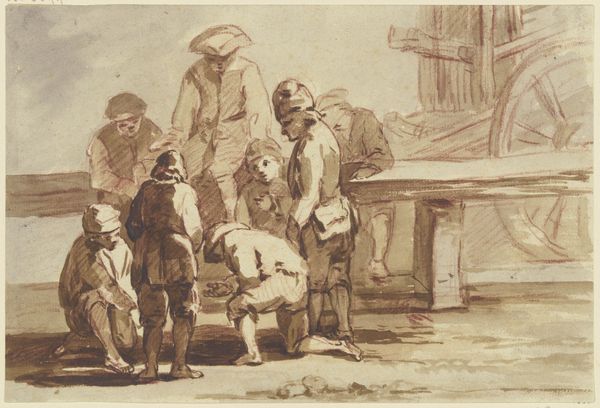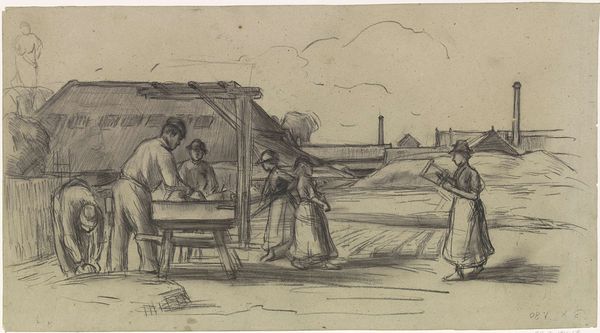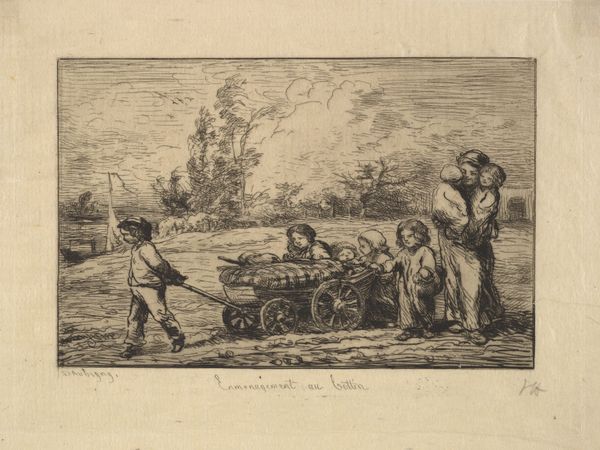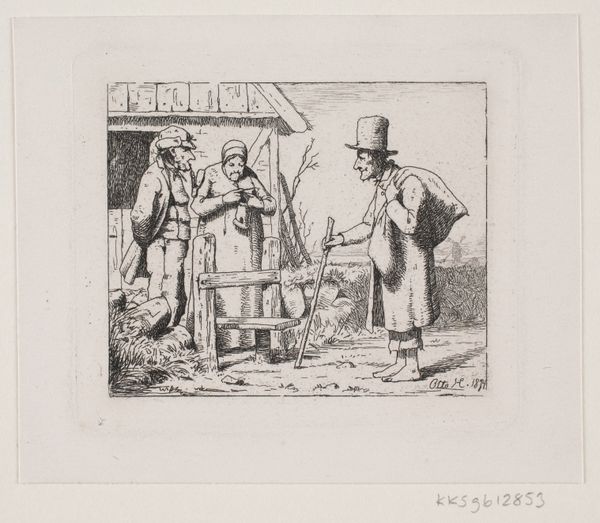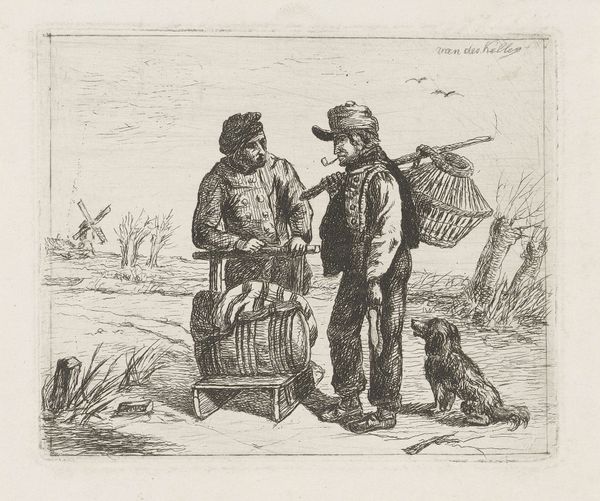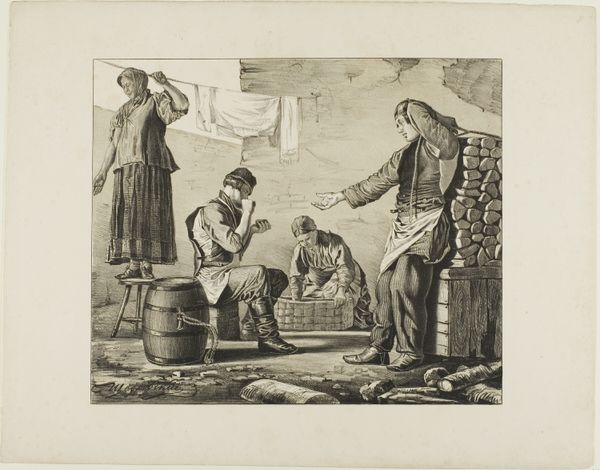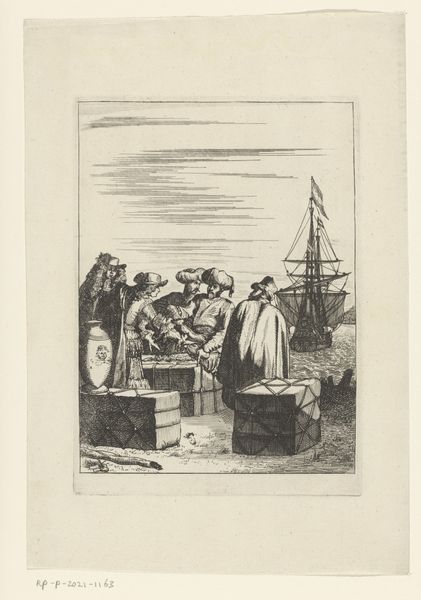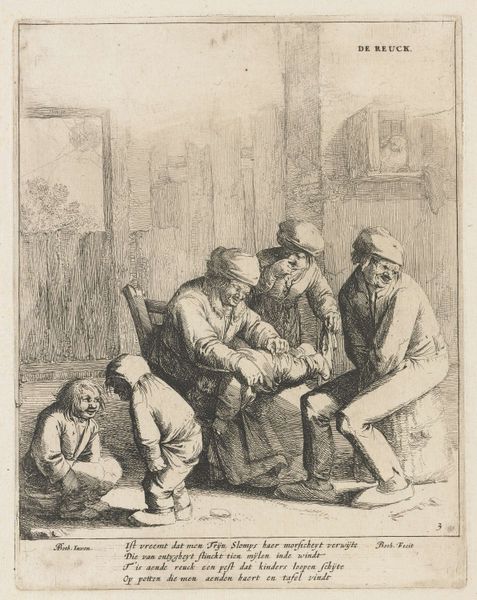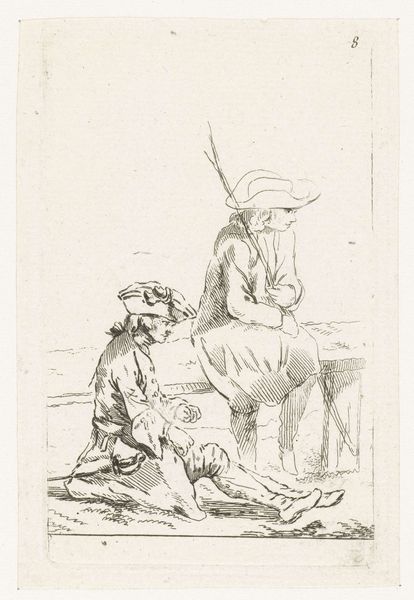
drawing, lithograph, print, paper, engraving
#
pencil drawn
#
drawing
#
lithograph
# print
#
pencil sketch
#
charcoal drawing
#
paper
#
pencil drawing
#
portrait drawing
#
genre-painting
#
engraving
Dimensions: 318 × 241 mm
Copyright: Public Domain
Curator: Today we’re looking at "Tilemakers," a lithograph created around 1803 by Thomas Barker, part of The Art Institute of Chicago's collection. Editor: It’s a fascinating scene, somber. The figures are rendered in detail, almost a quiet kind of dignity about them even with the clear marks of labor. Curator: Barker captured everyday life through genre scenes like this. Tile making was, of course, a key element of infrastructure and building at the time. Notice how Barker represents the stages of production: one woman rests while two others manipulate and arrange what seems to be several unfired tiles. Editor: Yes, and the figure at center with the shovel looms almost protectively over them. It makes you wonder about the dynamics at play here – their class, their family structures. Work, back then, especially this kind, must have been back-breaking. Curator: Indeed. It's likely Barker's visual rhetoric seeks to present tile makers as symbols of the everyday heroics of manual workers, as they engage in repetitive, but significant acts. Editor: You can see that symbolism reflected in the postures and the composition itself: a central patriarchal figure with his working class garments who presides over the scene, but ultimately doesn’t work. Curator: Symbolically, perhaps that represents how landowners gained the work benefits over time. There is a clear visual focus and an intentional arrangement meant to signify roles, as understood at the time. Editor: Right, even something like the bottle sitting beneath the stone table implies the hardships faced when the working day ended: what temporary salves gave brief moments of peace. We're seeing more than just the process of tile making here, but hints about social and class structures of labor, economics and access. Curator: Agreed. Barker's decision to render the scene in lithograph makes me think too about reproducibility and who had access to art at this time. These drawings and prints democratize representation of daily life, moving it into a modern social discourse. Editor: Seeing this really underscores how far we’ve come – or haven't – in appreciating the contributions of the labor class. Thanks to artists like Barker, this past isn't erased, only perhaps reformed as our own world continually turns. Curator: Indeed, this reminds me that our present reality is, in a sense, built on their backs.
Comments
No comments
Be the first to comment and join the conversation on the ultimate creative platform.

